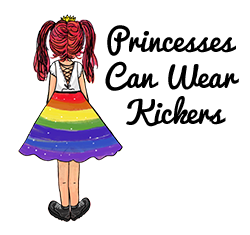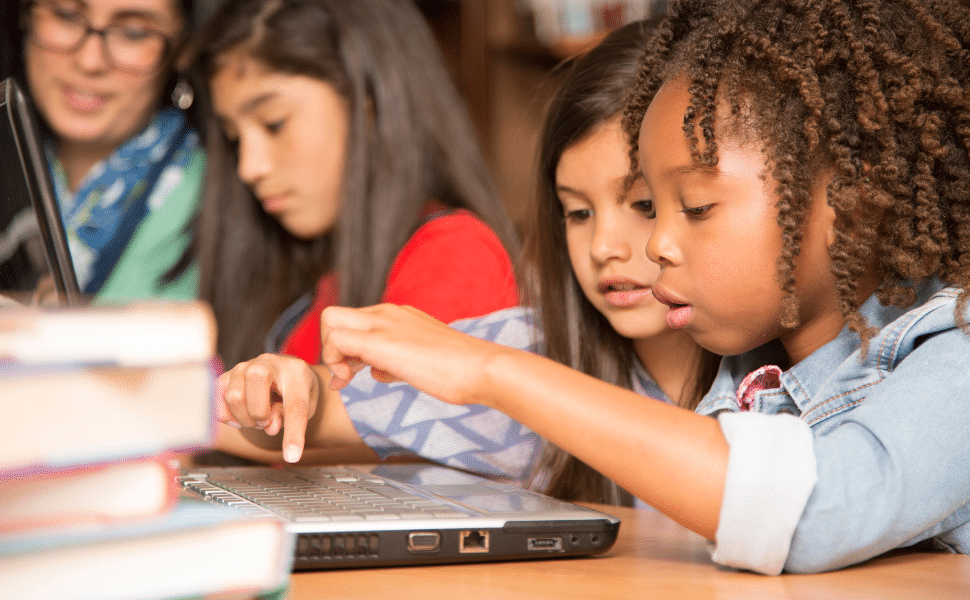Before you read this blog, it’s important that as a parent and/or educator you are fully aware of what dysgraphia is. To refresh yourself with the symptoms of dysgraphia, click here. If you do have a child with dysgraphia in the classroom, there are a few simple steps you can take to make their educational journey easier and happier.
Children with dysgraphia
Children with dysgraphia not only struggle with their handwriting, but they also have problems with creative writing as a whole. It is a brain processing issue which cannot be cured; but the right modifications, tools and support can make the world of difference to a child who is suffering.
Click here to choose from the best tools for dysgraphia in the classroom
Need more education for educators
Dysgraphia in the classroom is not commonly discussed in schools, there is little training for teachers on the issue and kids around the world are needlessly struggling because there are no accommodations in place. Those kids with dysgraphia will generally have difficulty holding a pencil, forming letters and correctly spacing their words on a line. Their posture may be awkward when writing and grammar will almost always be affected.
This is because the physical act of handwriting is painful, which in turn will affect all areas of writing: syntax, grammar, sentence structure, and sense. It is usually very difficult for children with dysgraphia to think and write at the same time – which can also be linked to the working memory. The struggle they have with writing overpowers their creativity and they often find it difficult to reread what they wrote and understand it.
Dysgraphia in the classroom: Teaching strategies for children with dysgraphia.
Please note, as an Amazon Associate I earn from qualifying purchases
- Be patient, always! It’s very important to remember that dysgraphia is not laziness – far from it. It is a learning difficulty. Encouragement is therefore vital. Always try to focus on the positive aspects of a child’s work.
- Touch typing. Allow you children to type out their work. In fat, touch typing should be encouraged. I cannot recommend touch typing highly enough. Computers and technology are highly recommended for children (and adults) with dysgraphia to ease the pressure of writing in many ways. Touch typing also allows children to use muscle memory in the hands to help with spelling. Click here to sign up for Touch Type, Read and Spell and find out why I highly recommend this course here.
- Pencil grips
- This comfortable and soft pencil grips is designed specifically for kids learning to write and finding it difficult to hold pencils. These pencil grippers are perfect for kids and adults to improve their handwriting. It will make the learning process fun and enjoyable rather than a tedious chore
- The pencil grip for toddlers 2-4 years or age 5 is made of food grade silicone making it safe and helps in relieving pressure and reducing hand fatigue. The design is perfect to fit all finger sizes. The pencil grips for kids handwriting also prevent wrist fatigue
- The ambidextrous pencil grips for kids handwriting can be used by both lefties and righties. Their hollow design prevents sweating while you write. Moreover, the narrow end tightly grips allow the young mind to absorb knowledge more efficiently. The children will participate in coloring, drawing, and writing more openly
- These kids pencil holders are available in different colors to increase kids' interest in writing. Pencil grippers are an ideal gift that you send to your colleagues, friends, and children. Furthermore, vibrant colors are also essential in developing motor functions in young developing minds for better engagement
- Handwriting pencil grips for Kids come in a pack of 6 with 3 different Shapes, which help meet every user's needs. Moreover, the purchase is not heavy on the wallet too. The pen grips are an excellent addition to the learning table at school or home
- The STABILO EASYoriginal Holograph Edition is the first ergonomic rollerball specially designed for left or right handers.
- Holographic limited edition EASYoriginal.
- Relaxed hand posture prevents premature muscle fatigue and writing pain.
- Easy smooth handwriting without blots or scratches thanks to the rollerball technology.
- Easy to refill with STABILO EASYoriginal cartridges available medium tip - sold separately
- Speech to text. Older students should also be allowed to use Speech to text technology. Once again, I have one which I highly recommend. Dragon Speech to text solutions. This will take your child/students to new highs!
- It’s important to remember that while assistive technology should be used to support your child/student, handwriting should never be eliminated. It’s a very important life skill. However, accommodations should be used to ensure that their creativity can shine through.
- Cursive writing. Allow your students to use cursive and if they can’t, teach them how to! They may find cursive easier and less painful. This is because there is more connectivity between letters which in turn reduces the need for spacing – which is difficult for anyone with dysgraphia. Cursive script also makes it easier to avoid reversible letters (think b,d,p,q) and requires a steady flow, which is beneficial.
- Dictation and oral tests. If you don’t have access to speech to text technology, another option is for the child to dictate and either their teacher, teaching assistant or parent/guardian act as a scribe. Oral testing is also encouraged over written assessments as are multiple choice answers.
- Specialist paper.
- Sufficient Quantity to Use: with the inclusion of 120 sheets of kindergarten paper for writing, our paper ensures that you have more than enough for your daily needs; Whether it is for school, office, or home use, these papers are designed to last
- Exquisite Raised Texture Design: our handwriting paper kindergarten is not your regular stationery, it features a nice sensory texture that enhances handwriting by providing tactile feedback to the writer; Suitable for individuals learning to write or those with visual diminution, this design promotes muscle memory and ensures you achieve clean, beautiful handwriting
- Various Functions in Daily Life: from jotting down class notes, writing letters, practicing handwriting, or creating beautiful calligraphy art pieces, our wide rule paper integrates seamlessly into your daily life; This versatile paper serves multiple functions, making it an essential addition to your stationery collection
- Proper Dimensions to Apply: sizing at approximately 8.3 x 11.2 inches/ 210 x 285 mm, our kindergarten writing paper fits into many folders, binders, or backpacks; It provides ample space for comfortable writing yet compact enough for ease of portability, writing, doodling, sketching, or creating, the possibilities are diverse and abundant
- Suitable for a Wide Range of Users: our handwriting practice paper is not only a fundamental resource for students and professionals, but it is also a nice aid for elderly folks and people with visual decrease; The tactile raised lines will guide the user to write neatly and clearly, making it a practical tool
- 【Letter-Size Graphing Paper】: Pads of 3 in the package, 30 sheets per notepad, 4x4 (4 squares per inch), 8.5’’ x 11.75’’ (W x L), Torn off dimension: 8.5 x 11, Blue lines on the smooth paper. They are neither too dark nor too bright. Easily focuses on identifying what is written, figures, patterns, diagrams, sketches. The squares help to keep everything aligned. Graph Note pad is perfect for griding out patterns/ drawing your practising/ projects.
- 【Nice Thick Grid Paper】: Graph Ruled Paper 11 x 8.5 is crafted from 70gsm heavy-weight paper. accept pens and pencil writing easily and smoothly without bleeding through. The lines are brighter and crisper than other cheaper versions. Printed on both sides, Enough space to write information. With a sturdy 800gsm backing, there is amply room for all the information you need to write. Great value of grafting paper pads for creating.
- 【Outstanding Quad Ruled Paper】: The micro perforation are quality controlled and can be torn of cleanly and neatly if necessary. The white letter-sized sheets quad paper features with 4x4 quad grid and crisp lines are essential tools for precise sketches and organized notes. Perfect to scale landscape project/ complete math problems/ taking notes. 4 squares per inch, perfect for graphing, charts and engineering projects
- 【White Square Ruled Paper】: High-quality quad ruled graph paper pads featuring 4x4 squares per inch for convenient note-taking and easy writing. The bright white color is easy on the eyes, Made of recycled fiber construction makes these pads environmentally-friendly. Great useful for jotting down reminders, schoolwork, Upgrade your note-taking with this excellent grid paper pad.
- 【Versatile Square Paper 4x4】: Keep your work and projects organized with Vishoitty Graph paper. With 3 pads in the package. 30 sheets in each graphic pad. The letter-size paper is perfect for students in math, physics, and science classes, as well as architects, designers, and anyone who needs to create precise diagrams. Use it for work, at home, or in school to keep everything aligned and organized. Get your today!!
- Extra time. When possible, allow extra time for the student to complete written tasks and also try to reduce the amount of writing required. Provide printouts instead of copying off the board and allow students to complete written assignments in smaller steps.
- When possible, don’t include spelling as part of the overall grade. You will find spelling tips for dyslexia and dysgraphia here. Spelling is difficult because dysgraphia affects the ability to translate words into written form. This is why spelling out loud is not affected. Try giving verbal spelling quizzes and allow students with dysgraphia to spell words quietly to themselves before writing them down. Note taking and abbreviations. Encourage students to record lectures and important lessons and when they do take notes, let them use abbreviations – create their own shorthand.
- Brainstorm. Always encourage all children, not just those with dysgraphia, to brainstorm their ideas before writing anything down. This is however especially important for any child with dysgraphia because the act of organizing thoughts onto paper is what many kids struggle with. Brainstorming helps to prepare the brain and activate ideas to repaper for writing.
- Encourage your students to use multiple drafts. When organization and written expression are an issue, creating an outline to organize ideas will be very beneficial. Using multiple drafts means there is far less pressure on getting it right first time. If you think about it, this is also the way professional writer such as authors write. They would never submit anything produced in their first draft. Reviewing is an important part of the writing process.
- Relaxation. Children with dysgraphia will get fatigued quickly. Encourage regular breaks which can be as short as 15 seconds. Just to shake off their hands, rotate wrists, wiggle fingers and squeeze a stress ball.
And finally…
It’s so important that teachers are aware of how to help children with dysgraphia in the classroom. Without the right support, the kids will lose confidence, and lose their love of learning. By implementing these very simple changes, you will make the world of difference to any child with dysgraphia! FOr more information on educating educators on dysgraphia, please contact me here.






Recent Comments